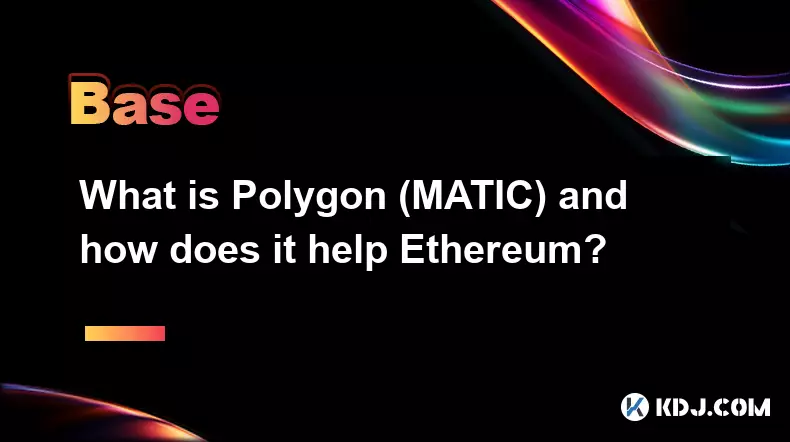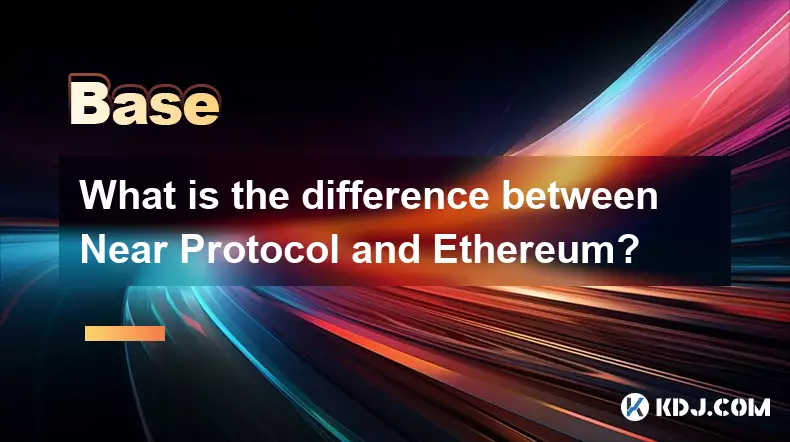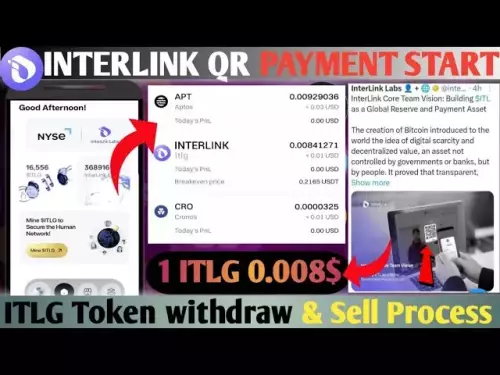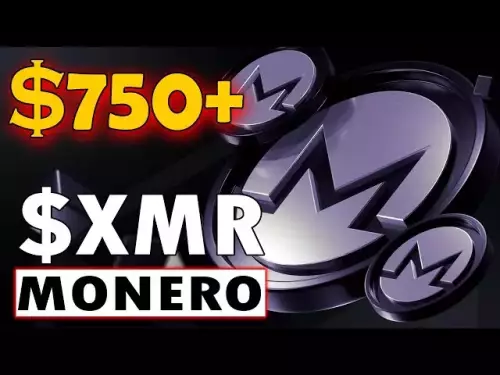-
 bitcoin
bitcoin $107208.295278 USD
-1.54% -
 ethereum
ethereum $3874.629914 USD
-1.38% -
 tether
tether $1.000440 USD
0.03% -
 bnb
bnb $1089.465513 USD
-5.53% -
 xrp
xrp $2.327672 USD
-1.65% -
 solana
solana $184.766505 USD
-0.73% -
 usd-coin
usd-coin $1.000076 USD
0.02% -
 tron
tron $0.310632 USD
-1.99% -
 dogecoin
dogecoin $0.187615 USD
-1.60% -
 cardano
cardano $0.633389 USD
-2.75% -
 ethena-usde
ethena-usde $0.999553 USD
0.03% -
 hyperliquid
hyperliquid $35.608231 USD
-4.13% -
 chainlink
chainlink $16.876114 USD
-3.98% -
 stellar
stellar $0.312239 USD
-0.91% -
 bitcoin-cash
bitcoin-cash $473.262969 USD
-7.09%
What is Polygon (MATIC) and how does it help Ethereum?
Polygon (MATIC) is a Layer 2 scaling solution that enhances Ethereum’s speed and affordability, enabling high-performance dApps with low fees while maintaining security and interoperability.
Oct 15, 2025 at 10:19 am

What Is Polygon (MATIC)?
1. Polygon, originally known as Matic Network, is a Layer 2 scaling solution designed to improve the performance of Ethereum-based applications. It operates as a framework for building interconnected blockchain networks that leverage Ethereum’s security while enabling faster and cheaper transactions. The native cryptocurrency of the ecosystem is MATIC, which plays a central role in staking, transaction fees, and governance.
2. The network was rebranded to Polygon in 2021 to reflect its broader vision beyond just a sidechain solution. Instead of functioning as a standalone blockchain, Polygon provides tools and infrastructure for developers to create scalable dApps with customizable features such as privacy controls, specific consensus mechanisms, and independent tokenomics—all while maintaining interoperability with Ethereum.
3. One of the core innovations of Polygon is its ability to process thousands of transactions per second at minimal cost, addressing Ethereum’s well-documented scalability issues. By handling computation off the main Ethereum chain, Polygon significantly reduces congestion and gas fees, making decentralized finance (DeFi), gaming, and NFT platforms more accessible to users globally.
4. Polygon supports multiple types of scaling solutions, including Plasma chains, zk-Rollups, Optimistic Rollups, and standalone sidechains. This multi-pronged approach allows different projects to choose the model that best fits their requirements without sacrificing compatibility with Ethereum’s vast ecosystem.
How Does Polygon Enhance Ethereum’s Functionality?
1. Ethereum has long struggled with high gas fees and slow confirmation times during peak usage periods. Polygon mitigates these limitations by acting as a complementary layer that handles transaction processing independently before anchoring proofs back to Ethereum. This ensures security without compromising speed or affordability.
2. The integration between Polygon and Ethereum is seamless for end users, who can bridge assets from Ethereum to Polygon within minutes using official wallet integrations like MetaMask. Once transferred, users can interact with DeFi protocols such as Aave and Curve on Polygon with near-instant finality and negligible fees compared to direct Ethereum usage.
3. Polygon also improves user experience through shorter block times and higher throughput. While Ethereum averages around 15 transactions per second, Polygon’s Proof-of-Stake sidechain can handle over 7,000 TPS under optimal conditions. This makes it ideal for applications requiring real-time interactions, such as play-to-earn games and prediction markets.
4. Beyond performance gains, Polygon contributes to Ethereum’s decentralization by distributing computational load across multiple parallel chains. This reduces reliance on a single network layer and enhances resilience against bottlenecks or attacks targeting the mainnet.
The Role of MATIC in the Ecosystem
1. MATIC serves as the primary utility token within the Polygon network. Users pay transaction fees in MATIC, and validators must stake large amounts of the token to participate in block production and earn rewards. This economic design aligns incentives and secures the network against malicious actors.
2. Staking MATIC allows participants to contribute to consensus and governance processes. Validators are responsible for verifying transactions and committing batches to Ethereum, receiving newly minted MATIC as compensation. Delegators can also earn passive income by entrusting their tokens to trusted validators.
3. Governance proposals on Polygon often require MATIC holders to vote, giving them influence over protocol upgrades, parameter adjustments, and funding allocations for ecosystem development. This decentralized decision-making structure empowers the community and fosters long-term sustainability.
4. As adoption grows, demand for MATIC increases due to its essential functions across staking, payments, and governance. Projects launching on Polygon frequently use MATIC in liquidity pools or reward distributions, further embedding it into the financial fabric of the ecosystem.
Frequently Asked Questions
Is Polygon a competitor to Ethereum?No, Polygon is not a competitor but rather an extension of Ethereum. It enhances Ethereum’s capabilities by providing scalable infrastructure while relying on Ethereum for final settlement and security. Most activity on Polygon eventually ties back to the Ethereum mainnet through cryptographic proofs.
Can I use Ethereum wallets with Polygon?Yes, most Ethereum-compatible wallets such as MetaMask support Polygon through custom network configuration. Users can switch networks easily and manage both ETH and MATIC within the same interface, simplifying cross-chain interactions.
Are transactions on Polygon secure?Transactions on Polygon benefit from strong security guarantees. While processed off-chain, they are periodically validated and submitted to Ethereum via fraud-proof mechanisms or validity proofs, depending on the chosen scaling method. This hybrid model combines efficiency with robust trust assumptions.
How does bridging work between Ethereum and Polygon?Bridging involves locking Ethereum-based assets in a smart contract and minting equivalent tokens on Polygon. Official bridges like the PoS Bridge enable bidirectional transfers, allowing users to move funds back to Ethereum when needed, though withdrawal delays may apply for security reasons.
Disclaimer:info@kdj.com
The information provided is not trading advice. kdj.com does not assume any responsibility for any investments made based on the information provided in this article. Cryptocurrencies are highly volatile and it is highly recommended that you invest with caution after thorough research!
If you believe that the content used on this website infringes your copyright, please contact us immediately (info@kdj.com) and we will delete it promptly.
- Vitalik Buterin's Efficiency Ratio: A New Standard for ZK-FHE Performance
- 2025-10-18 20:25:15
- OpenSea's SEA Token: Airdrop, Token Launch, and a Bold 'Trade Everything' Vision
- 2025-10-18 20:45:14
- BlockDAG, Crypto, and ROI: A New Era of Investment
- 2025-10-18 20:45:14
- Pudgy Penguins, ETF Rumors, and Price Swings: What's the Haps?
- 2025-10-18 20:50:12
- Bitmine's Ethereum Blitz: Is This the ETH Buying Opportunity of 2025?
- 2025-10-18 20:50:12
- Piso WiFi Revolution: From 10.0.0.1 Portals to Cross-Chain Swaps!
- 2025-10-18 20:55:12
Related knowledge

How do decentralized identity (DID) solutions work?
Oct 14,2025 at 11:36pm
Understanding Decentralized Identity in the Blockchain Ecosystem1. Decentralized identity (DID) solutions are built on blockchain networks, allowing i...

What is the difference between Near Protocol and Ethereum?
Oct 15,2025 at 08:01am
Near Protocol and Ethereum: Core Architectural Differences1. Near Protocol operates on a sharded blockchain architecture known as Nightshade, which al...

What does it mean for code to be "open source" in crypto?
Oct 12,2025 at 01:54pm
Understanding Open Source in the Cryptocurrency Ecosystem1. In the context of cryptocurrency, open source refers to software whose code is publicly ac...

What is the purpose of a "testnet"?
Oct 12,2025 at 09:01am
Understanding the Role of Testnets in Blockchain Development1. A testnet serves as a parallel version of a blockchain network, designed specifically f...

How to avoid phishing scams in crypto?
Oct 13,2025 at 06:18pm
Understanding Common Crypto Phishing Tactics1. Cybercriminals frequently use fake websites that mirror legitimate crypto exchanges or wallet platforms...

What is the difference between single-collateral and multi-collateral Dai?
Oct 12,2025 at 05:18pm
Understanding Single-Collateral Dai1. Single-Collateral Dai (SCD) was the original version of the Dai stablecoin launched by MakerDAO in 2017. It allo...

How do decentralized identity (DID) solutions work?
Oct 14,2025 at 11:36pm
Understanding Decentralized Identity in the Blockchain Ecosystem1. Decentralized identity (DID) solutions are built on blockchain networks, allowing i...

What is the difference between Near Protocol and Ethereum?
Oct 15,2025 at 08:01am
Near Protocol and Ethereum: Core Architectural Differences1. Near Protocol operates on a sharded blockchain architecture known as Nightshade, which al...

What does it mean for code to be "open source" in crypto?
Oct 12,2025 at 01:54pm
Understanding Open Source in the Cryptocurrency Ecosystem1. In the context of cryptocurrency, open source refers to software whose code is publicly ac...

What is the purpose of a "testnet"?
Oct 12,2025 at 09:01am
Understanding the Role of Testnets in Blockchain Development1. A testnet serves as a parallel version of a blockchain network, designed specifically f...

How to avoid phishing scams in crypto?
Oct 13,2025 at 06:18pm
Understanding Common Crypto Phishing Tactics1. Cybercriminals frequently use fake websites that mirror legitimate crypto exchanges or wallet platforms...

What is the difference between single-collateral and multi-collateral Dai?
Oct 12,2025 at 05:18pm
Understanding Single-Collateral Dai1. Single-Collateral Dai (SCD) was the original version of the Dai stablecoin launched by MakerDAO in 2017. It allo...
See all articles










































































